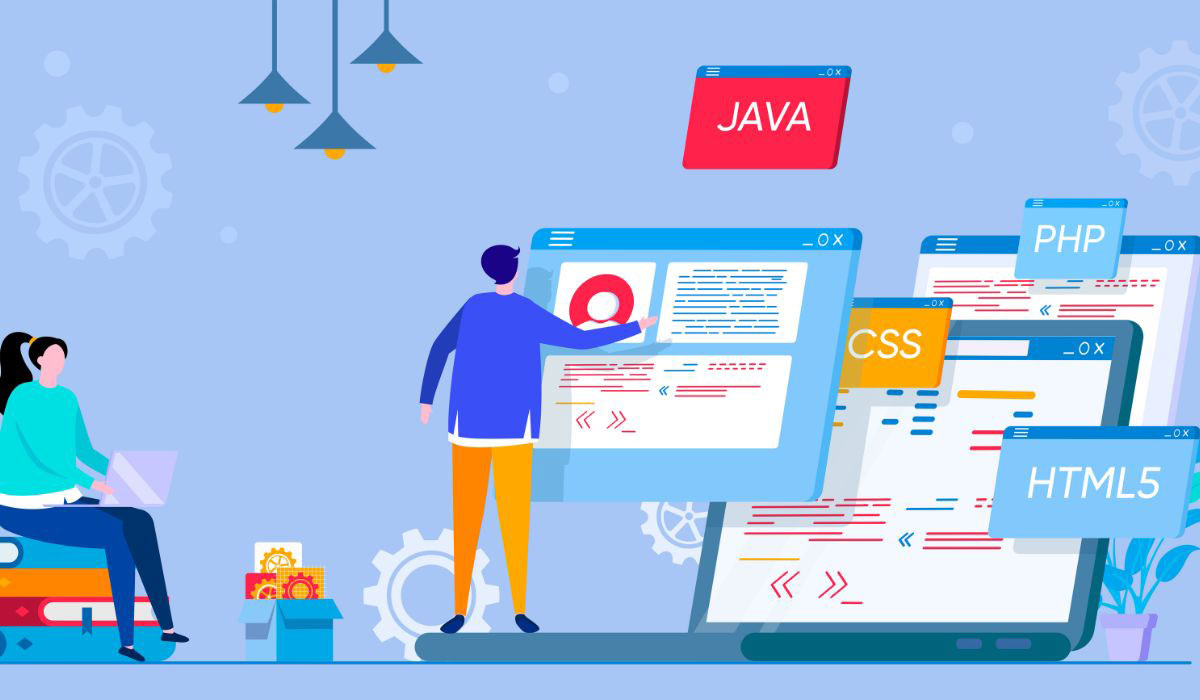
Latest Trends in Full Stack Web Development
By Adedayo Oyetoke, Published on: July 25th 2024 5 min, 922 word Views: 833
Full stack web development has evolved significantly over the years, driven by the need for more efficient, scalable, and maintainable web applications. As technology continues to advance, full stack developers must stay up-to-date with the latest trends and tools to remain competitive in the field. This article explores the latest trends in full stack web development, the future of the profession, and the demand for full stack developers in 2024.
Emerging Frameworks and Tools
JavaScript Frameworks
JavaScript remains a cornerstone of full stack development, with frameworks like React, Angular, and Vue.js continuing to dominate the front-end landscape. However, newer frameworks like Svelte and Solid.js are gaining traction due to their simplicity and performance benefits. Svelte, for instance, shifts much of the work to compile time, resulting in faster runtime performance and smaller bundle sizes.
Example:
- Svelte: Unlike traditional frameworks, Svelte compiles components into highly efficient imperative code that directly manipulates the DOM. This approach reduces the overhead typically associated with virtual DOM diffing, making applications faster and more responsive.
- Solid.js: Solid.js offers fine-grained reactivity, which ensures that updates are precise and efficient. This results in improved performance, especially for complex applications.
Backend Innovations
On the backend, Node.js continues to be a popular choice for its non-blocking, event-driven architecture. However, Deno, created by the same developer who introduced Node.js, is emerging as a strong alternative. Deno addresses some of Node.js's shortcomings, such as security and package management, by offering a more secure runtime and a built-in package manager.
Example:
- Deno: Deno provides first-class support for TypeScript out of the box and enforces secure code execution by default, making it an appealing choice for modern backend development.
DevOps and CI/CD Integration
The integration of DevOps practices and continuous integration/continuous deployment (CI/CD) pipelines is becoming essential for full stack development. Tools like Jenkins, GitHub Actions, and GitLab CI/CD enable developers to automate testing, deployment, and monitoring processes, ensuring faster and more reliable software delivery.
Example:
- GitHub Actions: GitHub Actions allows developers to automate workflows directly from their repositories. By defining custom workflows, developers can automate code testing, deployment, and even infrastructure provisioning.
Best Practices in Full Stack Development
Microservices Architecture
Microservices architecture is increasingly favored for its scalability and maintainability. By breaking down applications into smaller, independent services, developers can deploy, update, and scale each service independently. This approach also facilitates better fault isolation and continuous delivery.
Example:
- Docker and Kubernetes: Docker containers and Kubernetes orchestration are instrumental in implementing microservices. Docker ensures consistent environments across development and production, while Kubernetes automates deployment, scaling, and management of containerized applications.
Serverless Computing
Serverless computing, provided by platforms like AWS Lambda, Azure Functions, and Google Cloud Functions, allows developers to build and deploy applications without managing the underlying infrastructure. This model reduces operational overhead and enables automatic scaling based on demand.
Example:
- AWS Lambda: AWS Lambda allows developers to run code in response to events, such as HTTP requests or database changes, without provisioning or managing servers. This results in cost savings and simplified infrastructure management.
The Future of Full Stack Web Development
The future of full stack web development is shaped by several emerging technologies and trends:
WebAssembly
WebAssembly (Wasm) is revolutionizing web development by allowing developers to run high-performance code in the browser. Wasm enables languages like C, C++, and Rust to be compiled into bytecode that runs at near-native speed, making it possible to develop performance-intensive web applications.
Example:
- Blazor: Blazor, a framework developed by Microsoft, leverages WebAssembly to run .NET applications in the browser. This enables full stack developers to use C# for both client-side and server-side code, simplifying development workflows.
Artificial Intelligence and Machine Learning
Integrating AI and ML into web applications is becoming increasingly common. Tools like TensorFlow.js and Brain.js enable developers to build and deploy machine learning models directly in the browser, enhancing user experiences with features like recommendation systems, image recognition, and natural language processing.
Example:
- TensorFlow.js: TensorFlow.js allows developers to train and deploy machine learning models in the browser using JavaScript, enabling real-time inference and interactive applications.
The Demand for Full Stack Developers in 2024
The demand for full stack developers remains strong in 2024, driven by the need for versatile developers who can handle both front-end and back-end tasks. Companies value full stack developers for their ability to work on various parts of a project, reducing the need for specialized roles and facilitating more cohesive development processes.
Key Points:
- Versatility: Full stack developers' ability to work on both front-end and back-end tasks makes them highly valuable to organizations seeking to streamline development processes.
- Cost-Effectiveness: Hiring full stack developers can be more cost-effective for companies, as they can cover a wide range of tasks without requiring additional specialized hires.
Conclusion
Full stack web development continues to evolve, with new frameworks, tools, and best practices emerging to meet the demands of modern web applications. Staying up-to-date with these trends is crucial for developers looking to remain competitive and deliver high-quality, scalable solutions. The demand for full stack developers shows no signs of slowing down, making it a promising and dynamic career choice for those passionate about web development.
For more information on programming and web development, check out the resources available on Wireless Terminal, including articles on the best resources for learning to code online and the top programming languages to learn for beginners.
For further reading
By incorporating these trends and tools into their workflows, full stack developers can stay ahead of the curve and continue to deliver innovative, high-performance web applications.
